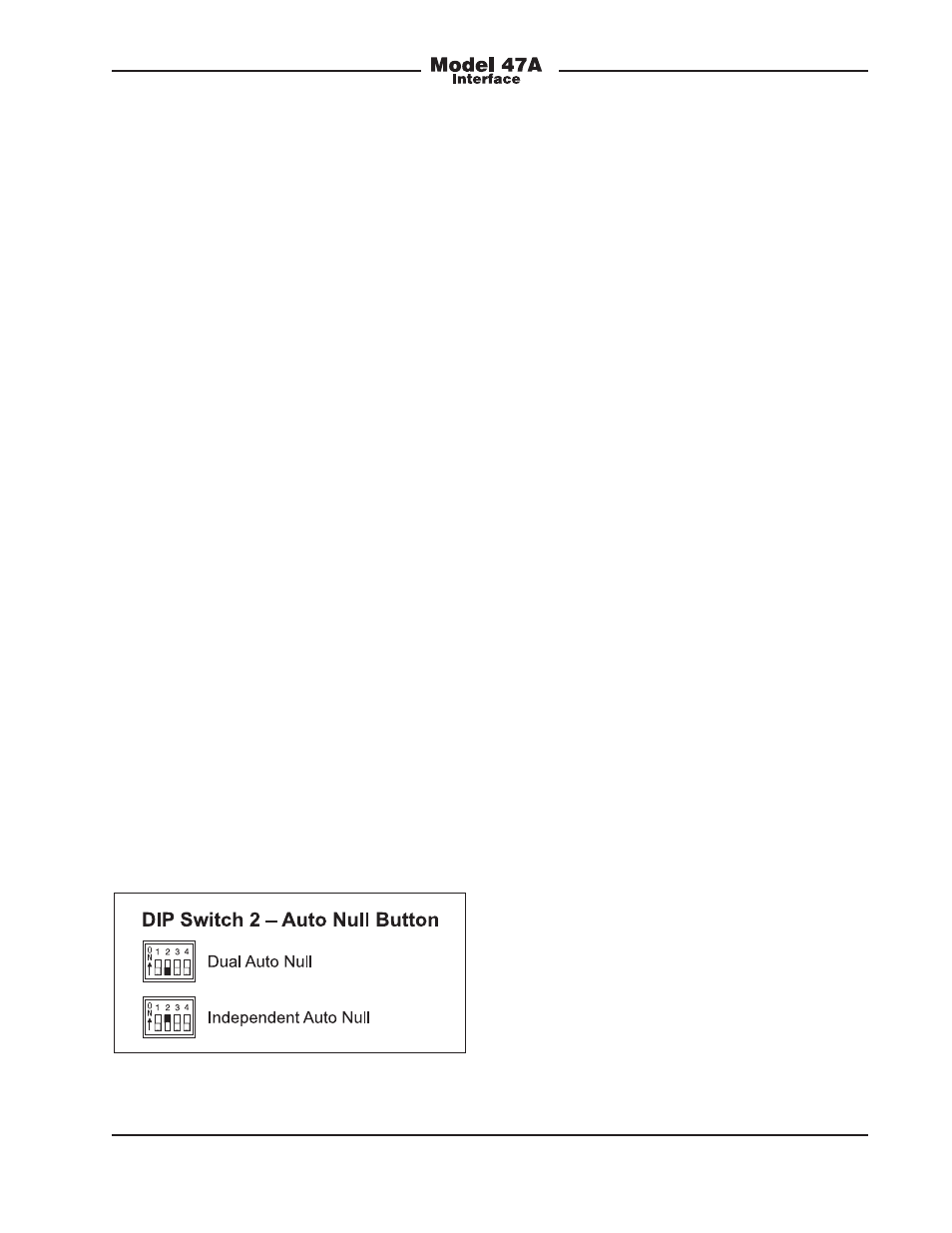Auto null button, Factory test – Studio Technologies 47A User Manual
Page 19

Model 47A User Guide
Issue 1, September 2014
Studio Technologies, Inc.
Page 19
Auto Null Button
One pushbutton switch is associated with
each of the Model 47A’s two interface
circuits. An advanced configuration param-
eter allows selection of the button’s opera-
tion. The choices are dual auto null and
independent auto null. When dual auto null
is selected a single tap of one of the two
front-panel pushbutton switches initiates a
routine that begins with channel 1’s auto
null sequence taking place followed imme-
diately by channel 2’s auto null sequence
being performed. Note that the configura-
tion selected for auto null button opera-
tion will also apply to the remote auto null
inputs.
Independent auto null allows the auto null
function to be initiated for each channel as
desired. A single tap will start the auto null
routine for channel 1. Two taps will start the
routine for channel 2.
Referring to Figure 8, when DIP switch 2 is
in its off (down) position dual auto null is
selected. This is provided specifically for
cases where the Model 47A’s 2-wire party-
line interfaces will be used with 2-channel
intercom user devices. As an example: the
RTS TW-Series provides two independent
audio channels, as well as power, over a
single 3-conductor cable. In a case such
as this it’s useful for both of the hybrid
circuits associated with an interface to be
auto nulled at approximately the same
time. Dual auto null allows a single tap of
the button to initiate nulling of both hybrid
circuits.
When DIP switch 2 is in its on (up) position
independent auto null is selected. This
would be appropriate for applications in
which the two audio paths associated with
each interface are used with independent
party-line intercom circuits. This situation
might arise when two Clear-Com single-
channel intercom circuits are connected to
one of the Model 47A’s 2-channel interfac-
es. The hybrid circuit associated with each
channel can be auto nulled as desired.
Another example would be in an RTS
TW-Series application that uses source
assignment panels. These SAP panels
would be used to route multiple intercom
channels to various sets of user devices
as desired. In this case, the two channels
associated with each Model 47A interface
will often end up not routed to the same
user device; independent auto nulling is
certainly desired.
Factory Test
Back-panel DIP switch 4 is used to select
between normal mode and factory test
mode. Referring to Figure 9, when DIP
switch 4 is in its off (down) position the
Model 47A operates in its standard fash-
ion. When DIP switch 4 is in its on (up)
position the factory test mode is selected.
As expected, when the Model 47A is
deployed in the field DIP switch 4 should
remain in its off (down) position. No dam-
age to the Model 47A or connected equip-
ment will occur when factory test mode is
active.
Figure 8. DIP Switch 2—Auto Null Button